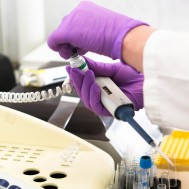Medical seals and devices are now being exposed to a wider range of chemical and temperature environments. Because of the intensity that these materials are enduring, strict requirements have been placed on medical equipment in order to be utilized in the medical industry.
In order for a material to be deemed medical grade, there are a series of steps and regulations that take place to ensure safety and functionality in medical applications. Here is everything you need to know about medical grade materials:
What makes a material medical grade?
Biocompatibility is one of the most important aspects when choosing a material for a medical application. Biocompatibility means that the properties must be biologically compatible and not react to other materials or living tissue.
Since many medical applications involve materials coming in contact with human tissue, materials are tested for biocompatibility in order to receive a medical grade title. Apple Rubber creates medical grade parts and seals for various medical applications that involve human contact, including medical appliances and pumps, IV components, implant materials and feeding devices.
Patient safety is a driving factor for manufacturing medical devices.
Manufacturers want to reduce and eliminate polymerization residues, making material selection a crucial aspect of building safe medical equipment. Silicone has proven to be the top material for high-quality medical grade seals. Apple Rubber offers a wide range of silicone parts and seals for medical grade devices, including o-rings, gaskets, face seals, housing seals and filter seals.
Medical grade elastomers are also chosen to promote patient and application safety. Apple Rubber uses Liquid Silicone Rubber (LSR), Viton® Fluoroelastomer (FKM) and Ethylene Propylene (EPDM) as leading medical grade elastomers. These materials have strong chemical resistors, excellent heat resistance and low permeability to gas, making them safe and durable for any medical application.
There are various tests done to classify medical grade materials.
In order to effectively determine if a material can be deemed medical grade, various rounds of testing must be done. USP testing is used to evaluate biological responses to elastomers, plastics and other polymeric material that may come into contact with human skin. This form of testing follows the U.S. Pharmacopeial Convention (USP) standards that are set for food ingredients, dietary supplements, medicines and medical materials. Their standards are enforced by the FDA and are applied in over 140 countries.
Another form of testing on medical grade materials is ISO 10993. This test follows the International Organization for Standardization (ISO) guidelines that ensure materials and products are fit for their purpose. Manufacturers of medical grade materials will label their products with the fitting ISO classification to provide specifications and references for materials.
Classifying a material as having medical grade quality holds a lot of weight. Since these materials are important in many difficult and straining applications, ensuring that they are is safe and up for the task is vital for success.
Want to talk more about medical grade materials?
Tweet us @AppleRubber to continue the conversation.
